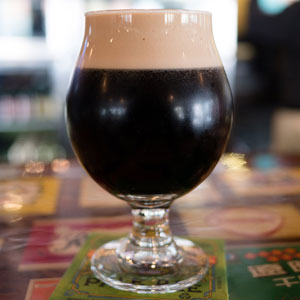The Manual has spent a lot of virtual ink on the topic of beer glasses.
From profiling the Pretentious Beer Glass Company to opining on Spiegelau’s perfect stout and IPA glasses and even advocating for the purchase of beer tasting paddle sets, there are many articles in the archive to review concerning why proper glassware matters.
But the final word has yet to be written on barware for the craft beer aficionado as we’re continuing to see new drinking vessels come into the market. Before you go chasing the latest craze, consider investing in the following glass styles to establish an all-purpose drinking cabinet.
THE MUST-HAVE
An all-purpose glass well suited for any type of beer.

A cross between a snifter and a tulip, this is the Swiss army knife of beer glasses. The bulbous bottom is ideal for using your hands to warm up an over-chilled stout and the subtle curve and vertical height allow for fluffy heads on saisons. The stem enables you to handle the glass without adding heat to colder brews, and the diminutive fluting means aromas can linger and develop. There honestly isn’t a beer style that doesn’t improve after being moved from tap, bottle or can to a standard Belgian glass.
NEXT STEPS
Do you have a beer style you drink more often than others? Pick up a style-specific glass.
Spiegelau’s IPA and Stout glasses
After extensive research and development with leading breweries, these glasses optimize carbonation, flavor profiles and aroma distribution for two of beer’s most popular generic classifications. Read The Manual’s reviews.
A Proper Belgian Glass
“Real” Belgian beer bars pride themselves not on the selection of beers, but on the ability to pair a specific beer with its proper glass. If you’re a fan of a Belgian brewery, collecting the approved, licensed glass means you’ll be drinking the way the brewer designed. The Belgian Beer Factory website sells 188 different branded glasses. It’s not just the logo that’s different; each glass has a unique shape, crafted to enhance the flavor of each specific beer.
THE VIABLE ALTERNATIVE
If you’re short on cash for new glassware or stuck in a new place with no proper beer glasses, give this a try.
A Large Wine Glass
No joke. Any old wine glass will do, as long as it’s large enough to hold your pour. The traditional wine glass shape will vent the beer better than a Shaker pint and you’ll look classy.
I can’t count the number of times I’ve said, “The best beer is the one in front of you.” The easiest way to make the best better is with a proper glass. Well-matched glassware means that your beer will retain its carbonation, aroma and taste longer and give you more time to sip and enjoy your favorite beverage.


